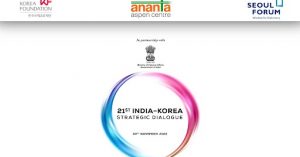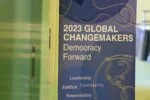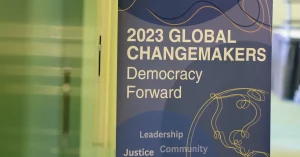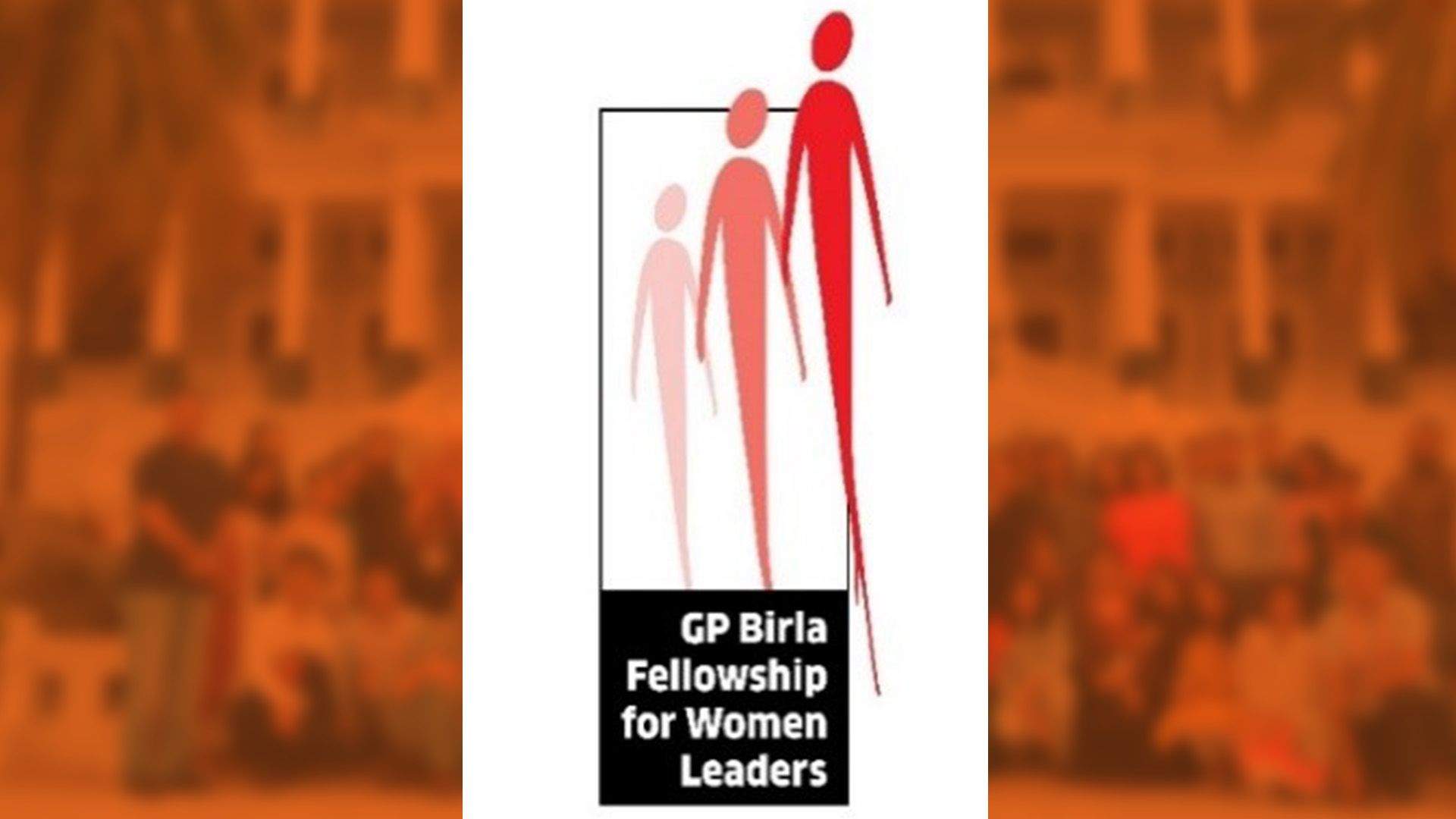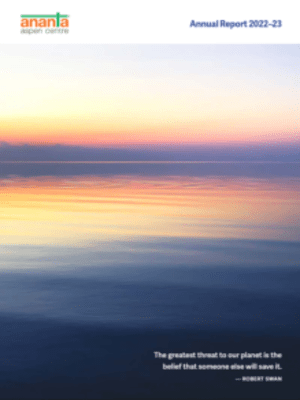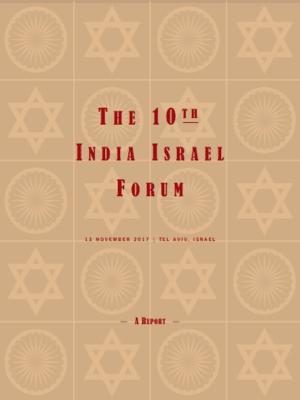SPECIAL ISSUE
WAR CLOUDS OVER UKRAINE ?
Sabre-rattling and verbal volleys
The decibel-level of the Russia-West standoff over Ukraine has been rising inexorably over recent weeks. Reports of the Russian military build-up near Ukraine’s borders quote ever-higher troop figures and more aggressive postures. Russia has been accused of political subversion in Ukraine, false flag operations as a pretext for invasion and cyberattacks on Ukrainian official websites. Russians have been equally vocal in allegations of Ukrainian forces planning an assault on rebel territories in eastern Ukraine, Western military advisers encouraging them, NATO troops and arms build-up in Russia’s vicinity and aggressive military activity in the Black Sea. US President Biden, Secretary of State Blinken and National Security Adviser Sullivan have strongly warned Russia against invading Ukraine, threatening dire consequences of strong economic sanctions and further military strengthening of NATO countries around the Black Sea. Other NATO countries have echoed these warnings. US-Russia, NATO-Russia and OSCE-Russia meetings have been held, to discuss Russia’s demands and the West’s security concerns, but have not yet yielded any results, beyond the promise of further talks. The Russian troops remain, with new stories of live fire drills and potential Russia-Belarus military exercises that extends the area of concern to Ukraine’s northern borders.
The road from Geneva to Vienna
The current situation seems almost surreal, if one considers how it has reached where it has. Much of the background has been covered in earlier issues of this Review, and is summarized in the following for completeness.
What appeared to be a new phase in US-Russia relations was signalled in Geneva in June last year, when the two Presidents met and decided to explore the path to a more stable bilateral relationship. President Biden said they would strive to bring some predictability to the relationship, enabling cooperation to resolve pressing global issues on which their interests converged. They announced three major decisions: to launch “strategic stability” talks (for arms control), to establish a mechanism to prevent cyber/ransomware attacks from the territory of either country, and (as Russia assumes the chair of the Atlantic Council) to try to reconcile their respective geopolitical interests in the Arctic. In addition, talks commenced on restoring the functioning of their diplomatic and consular offices to full strength.
Both leaders went out of their way to emphasize that the discussions were constructive and business-like. President Biden’s projection of his counterpart as a sober interlocutor, rationally pursuing his country’s interests, riled many in the US, more used to the portrayal of the Russian President as a malevolent and reckless wrecker of the world order. President Putin, in turn, described President Biden as a thorough professional, “completely knowledgeable on all issues”.
Grilled by an openly sceptic US media, President Biden was remarkably frank in his assessment of why his initiative may work. He described Russia’s perception of being “encircled” by the US and its allies, and President Putin’s feeling that the West was “looking to take him down”, even as Russia was being “squeezed” by the rising power of China. A Cold War with the US would thwart President Putin’s ambition of reviving Russia’s economy and its status as a great power. President Biden’s conclusion was that self-interest should nudge Russia towards a modus vivendi with the US.
President Biden also undertook a major diplomatic exercise of dialogue with European leaders to address their apprehensions about his Russia initiative. At summit meetings of the G7, NATO and EU, the US sought to forge a convergence on China: getting NATO to recognize the security challenge posed by it, and getting G7 and EU countries to coordinate efforts to counter China’s “non-market economic practices”. It appeared that the US had grasped the geopolitical wisdom of working to loosen the Russia-China embrace and was trying to impart this wisdom to its allies.
A flurry of bilateral contacts followed in the months after. US Under Secretary of State Victoria Nuland was in Moscow to discuss the gamut of bilateral and multilateral engagement. Among them was the resolution of the Ukraine crisis, on which the Russians said (and the US did not contradict them) that they had agreed that a special autonomous status for Donbas (the eastern Ukraine region of conflict), was an essential requirement for conflict-resolution.
Another significant meeting was between the Chairman of the US Joint Chiefs of Staff, General Mark Milley and the Russian CGS General Gerasimov in end-September, resuming a dialogue that had stalled in 2019. They were said to have discussed risk reduction and operational deconfliction in the many theatres where their forces (or their proxies) were in potential confrontation. They also reportedly explored the potential for US-Russia cooperation against terrorism emanating from Afghanistan.
Meanwhile, the US and Russia announced some progress in their strategic stability dialogue: an agreement to set up working groups to concretize the objectives of future arms control and to identify actions that could have strategic consequences. They also acknowledged some forward movement in discussions on cybersecurity, including sharing information on threats emerging from cyberspace. The intensity of ransomware attacks from Russia on US institutions decreased, and several networks of Russian hackers were apparently shut. The US State Department acknowledged useful Russia-US cooperation in the effort to draw Iran back into the JCPOA negotiations.
The most intriguing US-Russia interaction was a two-day visit to Moscow of CIA chief, William Burns. He had meetings with Russia’s NSA and the head of its Foreign Intelligence Service. More important, he had a conversation with President Putin, which is granted to few foreign visitors below the rank of head of state or government. Though there were no official readouts, the purpose of his two-day visit was obviously wider than merely to warn Russia about the consequences of its troop build-up, as the American media speculated.
In fact, when Burns was in Moscow in November, the Russian MFA issued an official denial of a troop build-up. Remarkably, the Ukrainian Defence Ministry also issued a press release, quoting its Chief of General Staff as saying there was no unusual activity of Russian forces, suggesting that Russia was undertaking routine troop movements in its own territory.
In the following days, media reports of Russian troop build-up merged with allegations of Russian efforts to politically destabilize Ukraine from within. Official reactions from across Europe and the US intensified in tone and content. Russia persistently denied any intention of invading Ukraine and responded with its allegations about aggressive Ukrainian and NATO activities.
Meanwhile, in two major foreign policy pronouncements, President Putin dwelt on the broader context of the current tensions. Describing the Ukrainian crisis as among the most sensitive issues for Russia, he bemoaned Ukraine’s refusal to implement the Minsk agreements (of 2014-15), the “indulgence” of France and Germany in permitting this, and the exacerbation of tensions caused by West’s supply of lethal weaponry to Ukraine. He said the West was totally insensitive to Russia’s security “red lines”: NATO’s military structure has virtually reached Russian borders, with anti-missile defence systems deployed in Romania and Poland, which could easily be put to offensive use, with a simple replacement of software, “which takes only minutes”. Asserting that Russia is taking appropriate “military-technical measures” for the present, he said it needs serious long-term security guarantees against NATO’s further eastward expansion and weapons deployments in close proximity to Russia’s territory. Such agreements, he acknowledged, should take into account the interests of Russia and of all the other states in the Euro-Atlantic region.
This charged atmosphere formed the backdrop to a second, virtual, meeting between Presidents Biden and Putin, on December 7.
The US NSA Jake Sullivan said a stern warning had been conveyed to President Putin that the US and its allies would take strong economic and military counter-measures, in the event of any further military escalation by Russia. If, however, Russia deescalated, the US would be willing to work with the Normandy group (of Russia, Ukraine, France and Germany), to fully implement the Minsk agreements for a resolution of the crisis in Ukraine. Also, in return for a Russian de-escalation, the US and its European allies would engage in a comprehensive discussion of strategic issues, addressing the security concerns of the US, NATO and Russia “through a larger mechanism”.
The apex-level conversation was followed up with telephonic contacts between US NSA Sullivan and the Russian President’s foreign policy adviser Ushakov and between Secretary Blinken and FM Lavrov. US Assistant Secretary of State Karen Donfried held consultations in Moscow, Kyiv and Brussels. Ukraine and the proposed European security dialogue were on the agenda. Draft Russia-US and Russia-NATO agreements on security guarantees were handed over to her in Moscow, as well as proposals on the way forward in the Ukraine crisis.
These papers and suggestions were discussed in successive meetings that the US, NATO and OSCE had with Russia in Geneva, Brussels and Vienna. The initial official responses were that each side had conveyed its perspectives to the other, and they would be studied further. Progressively, however, public statements on both sides became harsher and more inflexible, leading to the present media projections of imminent military or paramilitary action, with allegations and counter-allegations of troop movements, false flag provocations, rogue operations, weapons supplies and cyber intrusions. Fact and propaganda have become inseparable.
The sticking points
Cutting through the clutter of media frenzy, official rhetoric and conspiracy theories, there are three major (and interlinked) issues at the core of Russia-West confrontation today: the Ukraine crisis, NATO membership of Ukraine and Georgia, and weapons deployment in Europe.
As Harvard Professor Stephen Walt has recently written in Foreign Policy, the Ukraine crisis is largely a creation of US policy, though some blame should also be laid at other doors. Its pressure on NATO to recognize Ukraine’s membership aspirations in 2008 (against French and German opposition), and its support for a change of government in Kyiv in 2014, provoked the Russian annexation of Crimea. This is not to justify Russia’s actions, but the US should have seen it coming, given that Russia had telegraphed its intention as far back as in 2008.
Following the annexation/accession of Crimea, the separatist demands in Ukraine’s Russian-speaking eastern provinces soon morphed into an armed insurrection. Militant groups of eastern Ukraine (with Russian backing) made major territorial gains, arousing concerns that they would open up a land corridor from the Russian mainland to Crimea, handing Russia a major strategic advantage. Urgent efforts to stem this tide resulted in the Minsk Accords of 2014-15, brokered by France and Germany, accepted by Ukraine (which didn’t have a choice), endorsed by Russia (naturally), and eventually approved by the UN Security Council. They provided for an immediate ceasefire, disengagement of forces, a weapons-free corridor and exchange of prisoners. Ukraine agreed to amend its Constitution, to accord a special autonomous status for the two separatist eastern provinces, following which these provinces would democratically elect their local governments. Only after the completion of this process would the Ukrainian army get access to the Russia-Ukraine border.
Critics of the accords in Ukraine and elsewhere point out that they effectively legitimize a Russian protectorate within Ukraine. There is some validity in this view. The simple fact is that these provisions reflected the relative strengths of the negotiating parties – on the ground, at the time. Ever since then, Ukrainian governments have resisted going down this route. The US and its allies have called for the implementation of the Minsk accords, but have also supported Ukraine in its periodical redefinition of their provisions, while holding Russia responsible for non-implementation of the accords. The European promoters of the accords (France and Germany) have, from time to time, pushed to revive the Minsk process, but the US has solidly backed Ukraine and kept up the pressure on Russia.
It is only in recent statements (including the one by NSA Sullivan, quoted earlier) that US officials have supported full implementation of the accords, endorsing the Normandy process and accepting (for the first time) that the shortfall in implementation is on both sides (and not only on the Russian).
As mentioned, Russia-US differences over NATO membership for Ukraine date back to the 2008 NATO Summit in Bucharest, when the organization declared that it would commence the process of admitting Ukraine. At that time, President Putin was reported to have strongly warned US President Bush that Ukraine’s admission to NATO would lead to a breakup of the country and Russian annexation of Crimea. (Incidentally, the US Ambassador in Moscow at the time, William Burns, is now the CIA chief, whose discussions in Moscow in November would certainly have included pathways to resolving the current impasse.)
Ukraine’s value to Russia stems from many factors. Besides the intimate ethnic and cultural linkages (and largely because of them), Ukraine was a trusted high-technology defence manufacturing hub of the Soviet Union. Its economic strengths made it a potentially valuable partner in the Eurasian Economic Union that Russia was building with other former Soviet states. From a security perspective, the Ukrainian flatland has been a conducive route for multiple military attacks on Russia through history. The porous Russia-Ukraine border provides easy access to the insurgency-ridden Caucasus region, to rich hydrocarbons deposits, and even to Moscow. Added to these factors is the strategic importance of the Crimean port of Sevastopol. This Black Sea naval base is central to Russia’s maritime defence, as well as its power projection in Europe and Asia. NATO presence in Sevastopol would severely contract this power. Russia, therefore, cannot accept NATO extending to this territory.
The same goes for Georgia – its membership of NATO would convert the Black Sea into a NATO lake. Its adjacency to the restive Russian Caucasian republics of Chechnya, Dagestan and others would provide NATO with the perfect launching ground for encouraging separatist tendencies there. Russian military action in Georgia in 2008 (exploiting the providential provocation by the then Georgian government), its effective occupation and recognition of the secession of South Ossetia and Abkhazia were pre-emptive actions that pushed back Georgia’s NATO ambitions.
The third issue of “security guarantees” – restraint in weapons deployment, force postures and military exercises – has been a persistent theme in Russia’s dialogue with the West. Particularly after 2014, NATO military hardware in the Baltic Republics and Black Sea littorals has grown in number and lethality. Ever more sophisticated military drills have been held on land and in the two seas. President Putin has dwelt on these on multiple occasions, while also unveiling new hypersonic and other missile systems developed by the Russian military-industrial complex, which he has claimed can evade any American missile shield. The US withdrawal from the Intermediate-range nuclear forces (INF) treaty in 2018, citing Russian violations of the treaty, is another Russian grievance. The two draft agreements shared by Russia with the US deal extensively with security guarantees. They are obviously maximalist in their demands – including roll back of NATO military deployments from post-1997 NATO countries (which is all of Central and Eastern Europe) and formal commitments on no further enlargement of NATO in the post-Soviet space. But they also contain provisions on restraint in deployment of weapons and forces, which could be negotiated on the basis of reciprocity.
Red herring and moot assumptions
The current standoff belies the substantive progress in recent US-Russia interactions. There has arguably been more productive interaction in the six months since June last year than in the six years preceding. Both sides have indicated that they need this progress for their own reasons. The obvious question, therefore, is why the situation degenerated so suddenly.
Given the complexity of the issues involved, the decades of suspicion and mistrust that have shaped mutual perceptions and the conflicting interests of various stakeholders, it was perhaps inevitable that road bumps would emerge. The Ukrainian government’s apprehension that its interests may be compromised in any arrangement between the US and Russia is shared by its supporters in Central and Eastern Europe. Other European countries welcome a rapprochement that would suit their economic interests and promote a restraint in lethal weapons deployments. Within both the US and Russia, there are proponents of the political wisdom of accommodation and critics of perceived appeasement. The perspectives of the military-industrial complex and the security establishment shape assessments in both countries – by and large, they do not favour rapprochement. In the US, Wall Street and the tech industry benefit far more from business with China than from a rapprochement with Russia. There are other sub-plots in the stakeholder countries. It may, therefore, take little to rekindle latent mistrust of the behaviour of the other side: motivated stories, local provocations, rogue elements and false flag operations are all par for the course.
Some narratives about the situation need a reality check. It has been said that President Putin is seeking to exploit the weakness of the Biden Administration, after the debacle of the withdrawal from Afghanistan and the stalling of his domestic legislative program. This begs the question of how ranging troops on the Ukrainian border or invading the country can exploit the weakness. There is little that Russia can achieve with a military invasion. Opening up a land corridor through Ukraine to Crimea was a potentially realizable Russian goal in 2014-15; it was effectively thwarted by the Minsk agreements. It seems less achievable today, with the Ukrainian forces better armed and the Donbas groups somewhat fractured. An attempt to do so would effectively unite all of NATO in favour of strong action against Russia. As President Biden admitted in his most recent press conference, that unity is tenuous at present.
President Putin is not really negotiating from a position of strength. Though he is still the undisputed leader of Russia, his popularity is at a relatively low ebb, because of a deterioration of socioeconomic conditions in the country. Western sanctions may not have crippled Russia’s economy, as often assumed, but they have severely constrained investments and growth in some critical sectors of the new economy, fuelling public discontent over falling living standards. COVID-19 has exacerbated this trend. Unlike in 2014, a military intervention in Ukraine would be domestically most unpopular.
On the other side, much is said about harsh economic sanctions in the event of Russian aggression. The reality is that, over the years, the bottom of that barrel has already been scraped, by the successive imposition of sanctions for every real and presumed Russian “transgression”. The economic sanctions now being mentioned may hit the Russian economy hard, but they would also impact on the global economy, since Russia is a major global exporter of hydrocarbons and a variety of other natural resources. The West got a little taste of this in 2018, when hastily-imposed sanctions on the Russian aluminium major Rusal (whose promoter is widely described as “Putin’s pal”) shook the global commodities market and impacted on investors from the US to Europe and Australia. The sanctions were quietly withdrawn under cover of some face-saving actions. European nations, already suffering from high gas prices, would not want to see supplies from Russia disrupted in the middle of winter.
Similarly, further military strengthening of NATO countries on Russia’s periphery can only go so far. As Putin has noted in his recent speeches, there is already an impressive deployment of offensive and defensive weapons systems in these countries. Any further deployment would only provide Russia with the pretext to place more lethal weaponry with European capitals in their sights. Russia has also promised an appropriate “military-technical” response to further NATO weapons deployment threatening its security. As Russian analysts have clarified, this means that some of the new sophisticated missile systems may be deployed to target Europe, as well as on submarines within striking range of targets on US territory.
Conspiracy theories abound in this murky atmosphere. The question of why the Ukrainian Defence Ministry denied Russian troop build-up, when others in Ukraine and the West were playing it up, has not been answered. The sudden recent public reappearance in Kyiv of former Ukrainian President Poroshenko to rake up his differences with the incumbent, at a time when national unity was the priority, has caused speculation. The most recent “revelation” is one attributed to UK intelligence sources (reminiscent of the infamous Steele dossier), that Russia is preparing to install a puppet government in Kyiv, with no details of how this Houdini act is to be performed.
Back from the brink or over it?
Objective considerations should make overt military action a strategically illogical option. The events since June 2021 and the intensive bilateral engagement (the background music of hostile rhetoric notwithstanding) were consistently signalling a headline trend towards establishment of a modus vivendi, in which both the Biden White House and President Putin seemed to be invested.
That recent events have boxed them into inflexible positions is perhaps due to a mix of efforts to pander to their constituencies, score propaganda points and strengthen negotiating positions. It is quite possible that mistrust provoked disproportionate responses to false flag incidents or rogue operations. The Russian disclosure of their draft agreements and their insistence (now accepted) on written responses seem to be pushing both sides even deeper into their corners
Neither side can afford to either step back or to descend to the vicious cycle of military action and harsh response. The effort, therefore, has to be to reach some accommodation by (if necessary) agreeing to kick the can of the various issues down the road in a face-saving manner.
The US has already moved more than half-way towards Russian expectations on the Minsk process on Ukraine. Ukrainian and other European sensitivities would prevent smooth progress in the implementation; and the Biden Administration has repeatedly expressed its position of “no decisions or discussions about Ukraine without Ukraine”. There is also the vexed issue of the status of Crimea. US and EU continue to emphasize that its annexation cannot be recognized, and there is no way Russia will yield on this. For the present, therefore, an agreement to relaunch the Normandy group discussions, with US support is probably the only feasible face-saving option.
The NATO membership of Ukraine and Georgia is, in practical terms, a non-issue, though frequent mention of this possibility by these countries irks Russia. At the same time, it is obviously politically unacceptable to the US and NATO to give an assurance that it will not happen. However, as long as Russia remains in occupation of Crimea and Russian troops are propping up the self-declared “independent” Georgian states of South Ossetia and Abkhazia, NATO cannot admit them – and there is no foreseeable prospect of change in this situation. NATO has not admitted either country to its Membership Action Plan, which involves a rigorous review of the political and economic governance structures of the candidate country to determine its eligibility for NATO membership. The US has consistently been telling Ukraine publicly (most recently, through Secretary Blinken in May 2021) that it still has some way to go to eradicate corruption from its system and reform its democratic processes. Finally, NATO membership needs unanimous agreement of all NATO members. There will always be those who will demur in the case of Ukraine and Georgia, because of sensitivity to Russia’s reaction. Once again, the diplomatic challenge at this stage is to find a formulation that Russia could live with.
On security guarantees, there are better prospects of some accommodation. The extreme Russian demands on withdrawal of military infrastructure from the new NATO countries and explicit recognition of its sphere of influence in the South Caucasus and Central Asia are obviously unacceptable, but some understanding on the placement of short- and intermediate-range missiles in the European theatre and on the nature, frequency and location of military exercises appear to be achievable goals. President Putin’s acknowledgement in a recent speech that security guarantees should also take into account the interests of other states in the Euro-Atlantic region is a more reasonable basis for negotiation than the maximalist positions incorporated in the written drafts.
As of now, even as the media continues to beat the war drums and officials on all sides continue to talk tough about their red lines, the US-Russia dialogue also continues, with the US Secretary of State meeting his Ukrainian and Russian counterparts, and the prospect of another Biden-Putin summit being talked about. While these are hopeful signs, there is always the danger that one side may overplay its hand in this game of chicken, particularly when provocateurs are ready at hand.
The larger picture
The Biden White House embarked on a geopolitical rebalancing in June last year, which aimed at a modus vivendi with Russia and disengagement from the conflicts in Europe and Asia, to focus more sharply on domestic challenges and the principal external challenge from China. President Putin welcomed this opportunity of reengagement with the West, to revive Russia’s flagging economy and to secure an autonomy from China that would expand Russia’s freedom of political action globally.
The question in Russian minds seems to be whether President Biden has the clout to effectively counter the dissenting voices within his country and among his European allies, to sustain this course. Statements and actions in the US and Europe over the past months may have reinforced these doubts. The essence of recent Russian statements (shorn of the hyperbole) is that, if such a geopolitical rebalance is to be sustainable, it should incorporate suitable security guarantees for Russia, so that it does not constantly have to anticipate and counter moves to probe its territorial integrity and constrain its external influence – which is how Russia sees NATO expansion, its weapons deployments and military exercises and other US policies across Europe and Asia.
The manner in which the present tensions are defused will provide an answer to the question and indicate whether the political compact sought by Russia is attainable.
What does it mean for India?
The denouement of the present crisis is of major consequence to India. If the parties can amicably pull back from the brink, it can be hugely beneficial – not only for India-Russia relations, but also for India’s broader global ambitions. A sustainable US-Russia modus vivendi (not necessarily a détente or full rapprochement) would enable the Biden Administration to concentrate on the China challenge and focus its energies on its Indo Pacific engagement, which is in India’s interest. It would also dampen the US pressure on India-Russia relations. In a way, India-Russia, India-US and India-Europe relations could then be pursued along broadly independent tracks (though of course there will be interconnections) – a situation that prevailed in the early 2000s. Even on the Indo-Pacific, we can probably get a Russian buy-in – with a greater US-Russia engagement and Russian autonomy from China, Russia may be more amenable to accepting that India’s Indo Pacific objectives are compatible with its vision of a Greater Eurasian Partnership.
The alternative – of hotheads or miscalculations on either side leading to a confrontation – is too terrible to contemplate. It means a continuation, or exacerbation, of the prevailing Cold War-like acrimony. It may weaken the standing and authority of both the leaders in their country. It would inevitably strengthen China’s hand with both Russia and the US.
India has not officially made a comment on the current standoff. It does not need to. But it has a definite stake in its outcome.
*******
The previous issues of Russia Review are available here: LINK
…………………………………………………………………………………………………………………
(The views expressed are personal)
The Author can be reached at raghavan.ps@gmail.com
…………………………………………………………………………………………………………………






